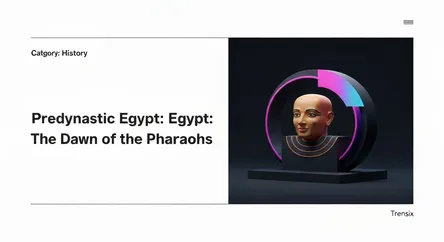History
Predynastic Egypt: The Dawn of the Pharaohs

Explore Predynastic Egypt, the critical period of cultural and technological growth that led to the rise of the world's first unified state.
What is it?
Predynastic Egypt is the era of Egyptian history before the country was unified under a single ruler, generally dated from c. 6000 to 3150 BCE. This period marks the transition from scattered Neolithic farming communities along the Nile River to the foundation of the powerful Pharaonic state. It is characterized by distinct cultural phases, such as the Badarian and the Naqada cultures, named after archaeological sites. During this time, early Egyptians developed sophisticated skills in pottery, stonework, and metallurgy. Social complexity grew, with evidence of trade, distinct social hierarchies, and small, independent villages eventually coalescing into larger political entities in Upper and Lower Egypt.
Why is it trending?
The Predynastic period is a dynamic field of study, with new archaeological discoveries constantly reshaping our understanding of Egypt's origins. Recent excavations and advanced analytical techniques are revealing a more gradual and complex process of state formation than previously thought. Discoveries of settlements and cemeteries in the Nile Delta region are providing new data on the cultures of Lower Egypt and their interactions with their southern neighbors. These findings challenge older theories and generate excitement and debate among historians and archaeologists, keeping the topic relevant in academic circles and popular historical media.
How does it affect people?
Understanding Predynastic Egypt provides crucial context for the entire ancient Egyptian civilization, whose art, architecture, and religion have captivated people for millennia. The cultural foundations laid during this early period—such as artistic conventions, burial practices aimed at an afterlife, and the symbols of authority—directly influenced the Pharaonic era. By studying this formative time, people can appreciate the deep roots of Egyptian culture and the immense societal changes that made the pyramids and pharaohs possible. It offers a glimpse into the birth of one of the world's first and most enduring civilizations.